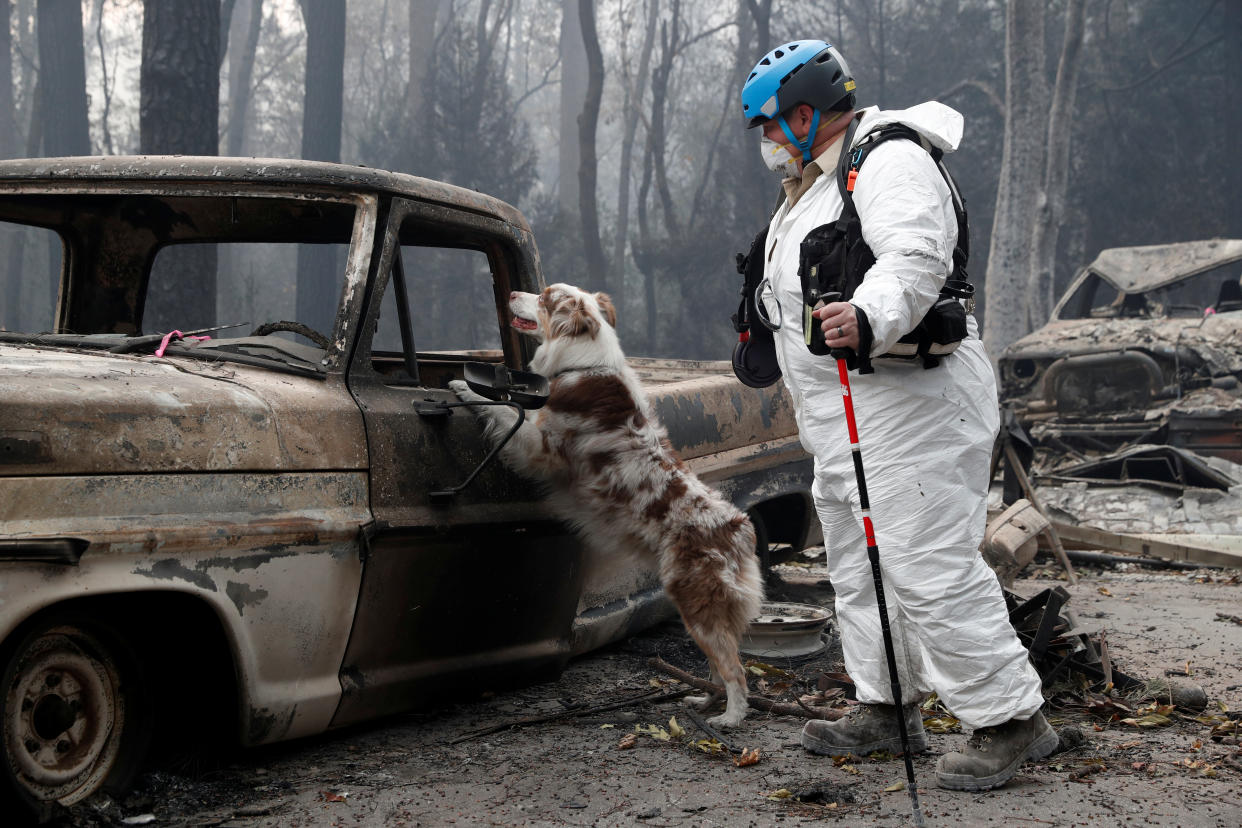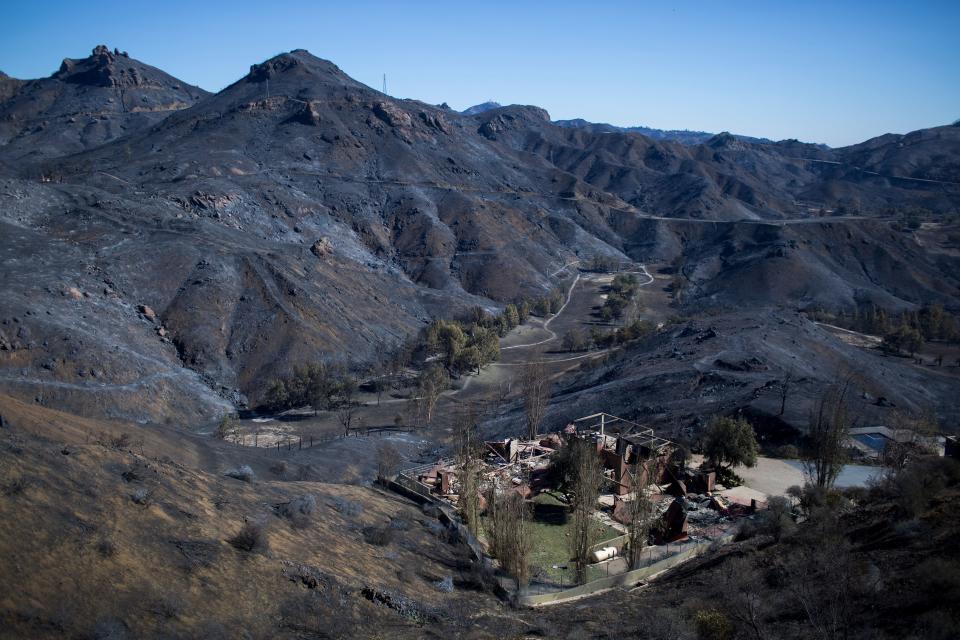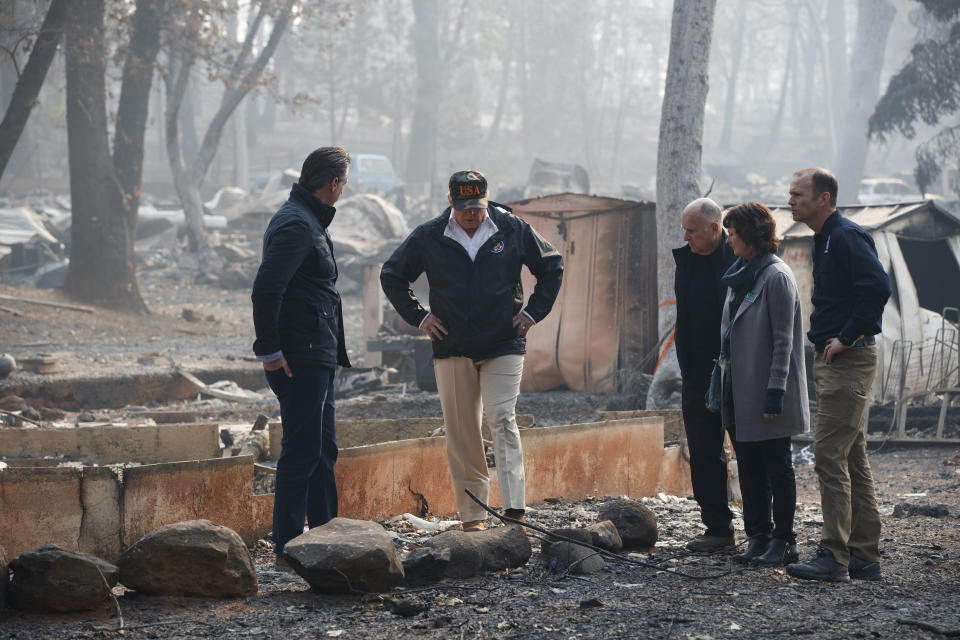California fights wildfires year-round now: 'There's no such thing as a fire season'

Traditionally, there was a fire season in California, running from roughly June until late October — the period when the state was at greatest risk of wildfires, and the public was reminded to take precautions and listen for alerts. But in 2018, and for the foreseeable future, there is no fire season: the risk of wildfires, which grow deadlier and more destructive each year, now extends through the calendar.
Fire Captain Scott McLean works in Sacramento but lives about 90 miles north in the city of Chico, a 20-minute drive from Paradise, which was just incinerated in the Camp Fire. He’s seen many changes since joining the California Department of Forestry and Fire Protection (Cal Fire) in 1997, but the most significant is the escalating frequency and ferocity of the wildfires.
“We don’t even call it a season anymore. There’s no such thing as a fire season. Right now, we’re looking at a fire year. We’re having fires every month of the year,” McLean told Yahoo News.
He said the severe drought and an ongoing bark beetle infestation have killed more than 129 million trees since 2012, creating a buildup of dead wood on the ground. He recalled that May ushered in triple-digit temperatures that didn’t let up. As a result, fires are burning hotter, more erratically, and earlier in the year. This year, significantly aggressive fires started in May.
“By that I mean they just took off extremely fast, spread extremely fast, and started killing people, firefighters. We don’t usually see these patterns of all these deaths that we’re trying to comprehend right now,” McLean said. So far, six firefighters have died in wildfires in 2018.

The Thomas Fire in December 2017 burned 281,893 acres, making it the largest wildfire in the state’s history — for about half a year. The Mendocino Complex Fire in July 2018 burned 459,123 acres.
The Camp Fire, which began on Nov. 8, has consumed 151,000 acres and is only 66 percent contained. It killed at least 76 people, and around 1,000 are listed as missing (although some of these could be among those driven from their homes and incommunicado). This is by far the deadliest fire in California’s history. The second is the Griffith Park Fire in 1933, which killed 29.
Also in the last month, the Hill Fire in Ventura County affected 4,531 acres and is 100 percent contained. The Woolsey Fire covered 96,949 acres in and around Los Angeles County and is 94 percent contained.
Cal Fire is redirecting resources from Woolsey to Camp as needed, but there are already 5,500 people assigned to it. McLean said they are starting to “turn the corner” and make more significant progress on the Camp Fire.
“By that I mean rain and thunderstorms. That is a blessing, but also a hindrance for the firefighters,” he explained. “Reason being they’re in an area right now where they’re fighting the last parts of this fire on dirt roads, dirt trails, real rugged country — so now they have serious issues and safety hazards because all of this will turn to mud and be very slippery.”

The frequency and power of wildfires have increased for many reasons, including man-made climate change and poor forest management. These factors are not easily remedied — particularly the effects of global warming — so the distressing trend toward more aggressive, more frequent wildfires is expected to continue.
As the scope of the Camp Fire came into view more clearly, politicians temporarily put aside their differences over environmental policy to focus on the destruction and the response effort.
Over the weekend, President Trump visited the town of Paradise, which used to have a population of 26,000, with Democratic California Gov. Jerry Brown. Their appearance before the media was cordial, and Brown thanked the president — who had some trouble remembering the name of the city, calling it “Pleasure” before being corrected — for federal support.
Trump continued to focus on forest management as the solution, and in answer to a question said nothing he had seen in California had changed his mind about global warming as a threat. He cited the example of Finland as a country that avoids forest fires by raking up brush from the ground, to the bafflement of that country’s president. But he assured Americans that he wants “great climate.”
_____
Read more from Yahoo News:
George Conway: Republican Party has become a ‘personality cult’ under Trump
An American killing: Why did the U.S. Park Police fatally shoot Bijan Ghaisar?
Cory Booker: I will ‘take some time over the coming months’ to consider 2020 bid
Hugh Jackman on ‘The Front Runner’: I told Gary Hart I took his legacy ‘very seriously’
Photos: On patrol with the Iraqi militia hunting the last remnants of the Islamic State



